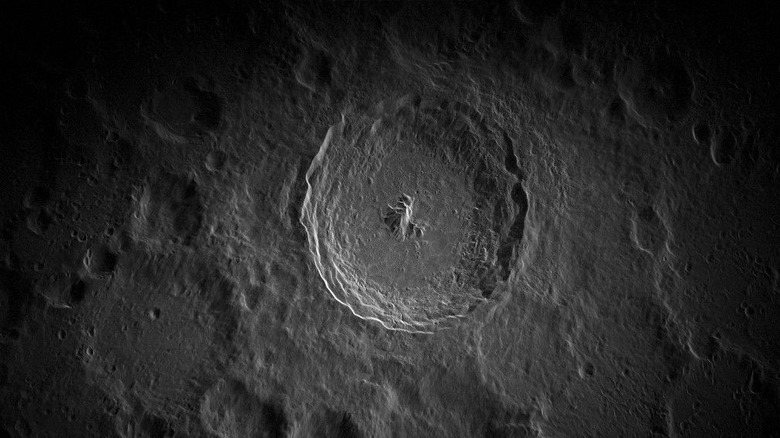Astronomer Captures Video Of A Meteorite Smashing Into The Moon
While monitoring the Moon in February, Japanese astronomer Daichi Fujii captured the bright flash of a meteor striking the Moon's surface, later sharing the video on Twitter. The event is quick and easy to miss in the video that's included below. But if you pay careful attention, you can see the bright flash as the meteor strikes our Lunar satellite.
According to Fujii, the meteor appears to have hit somewhere near the Ideler L crater, which is slightly northwest of the Pitiscus crater on the Moon. Capturing the meteor strike on video makes the occasion even more exciting. We've always known that meteors can strike the Moon – and other planets – but video evidence of such events hasn't always been easy to come by.
Additionally, if the meteor strike isn't large enough, or it isn't on the side of the Moon facing Earth, it's easy to miss them. Meteors, on average, can travel around 30,000 miles per hour, or 48,280 kph. This high velocity means that any large meteor striking the Moon would clearly show on video in the form of a bright flash like that seen in the video captured by Fujii.
私の観測史上最大の月面衝突閃光を捉えることができました!2023年2月23日20時14分30.8秒に出現した月面衝突閃光を、平塚の自宅から撮影した様子です(実際の速度で再生)。なんと1秒以上も光り続ける巨大閃光でした。月は大気がないため流星や火球は見られず、クレーターができる瞬間に光ります。 pic.twitter.com/Bi2JhQa9Q0
— 藤井大地 (@dfuji1) February 24, 2023
The crater created by the meteor strike hitting the Moon appears to be around 39 feet in diameter (roughly 12 meters), and there is hope that NASA's Lunar Reconnaissance Orbiter could one day provide images of it, giving us a good view of the meteor strike's aftermath, something this video isn't capable of showing us in detail.
Meteors and other debris constantly pound against the Lunar surface, creating the famous craters we recognize on our planet's lunar satellite. Further, because the Moon's exosphere is so thin, meteors and other debris can easily pass through it and crash into the Moon. Catching this particular meteor strike the Moon on video, though, was a bit of luck for Fujii and can even help provide scientific data about the rate of impacts on the lunar surface.
